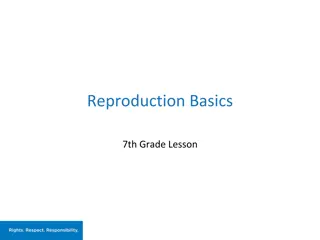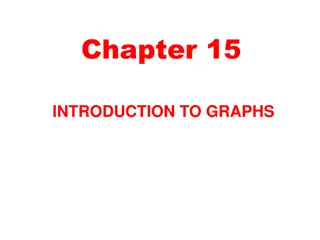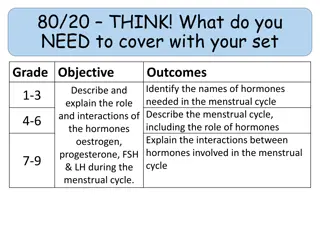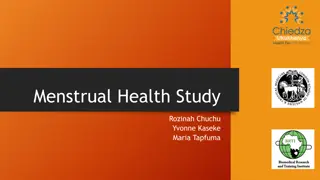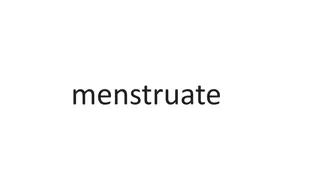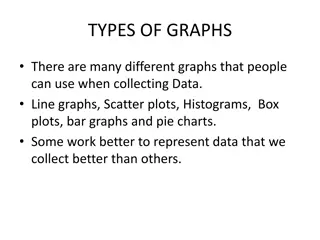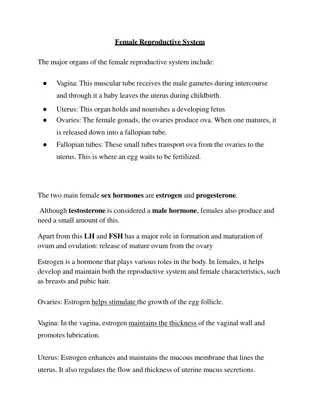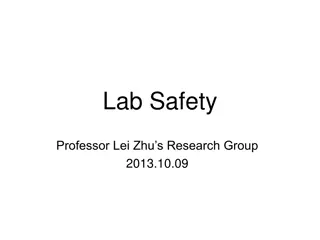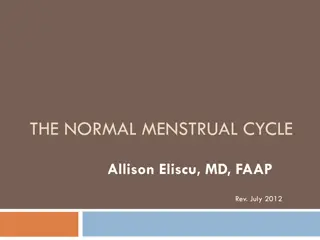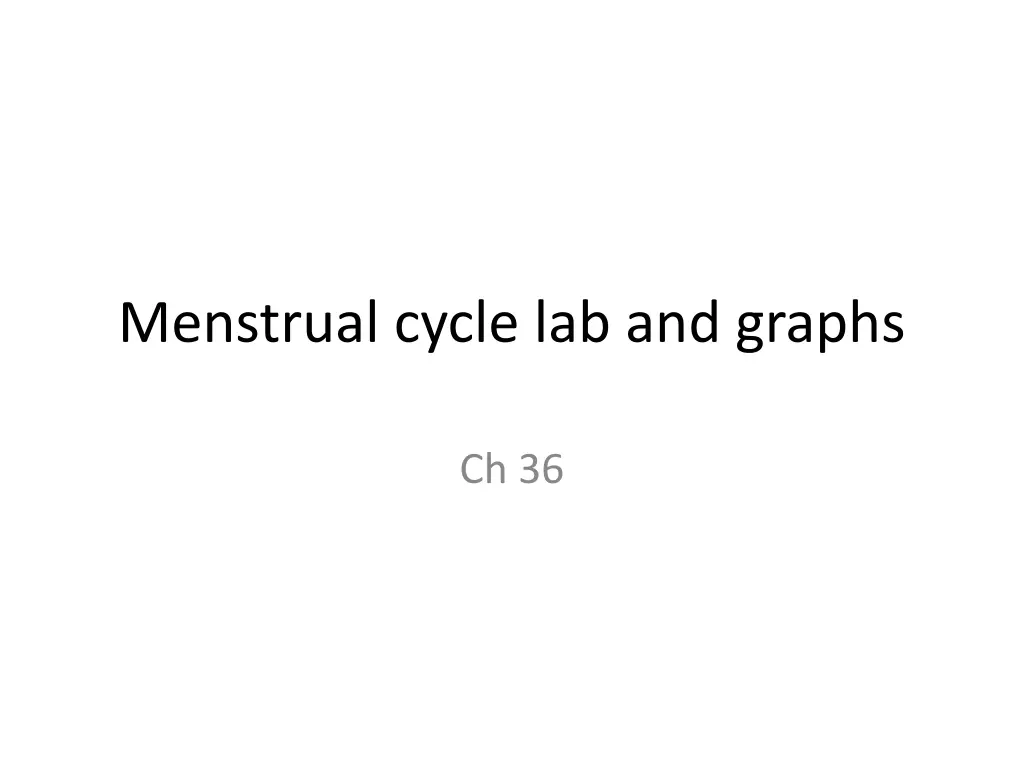
Understanding the Menstrual Cycle and Hormone Regulation
Explore the intricate processes of the menstrual cycle, including menstruation, ovulation, and hormone fluctuations. Learn how estrogen and progesterone levels impact the uterus's preparation for a potential pregnancy and the subsequent shedding of the endometrium. Discover the role of Gonadotropin-Releasing Hormone in orchestrating key reproductive functions.
Download Presentation

Please find below an Image/Link to download the presentation.
The content on the website is provided AS IS for your information and personal use only. It may not be sold, licensed, or shared on other websites without obtaining consent from the author. If you encounter any issues during the download, it is possible that the publisher has removed the file from their server.
You are allowed to download the files provided on this website for personal or commercial use, subject to the condition that they are used lawfully. All files are the property of their respective owners.
The content on the website is provided AS IS for your information and personal use only. It may not be sold, licensed, or shared on other websites without obtaining consent from the author.
E N D
Presentation Transcript
http://www.precisionnutrition.com/wordpress/wp-content/uploads/2009/05/menstrual-cycle-estradiol.jpghttp://www.precisionnutrition.com/wordpress/wp-content/uploads/2009/05/menstrual-cycle-estradiol.jpg
Menstrual Cycle, Menstruation, Hormone Levels During Menstrual Cycle
http://asanafoods.com/wp-content/uploads/menstrual_periods.pnghttp://asanafoods.com/wp-content/uploads/menstrual_periods.png
http://biologi.ucoz.com/images/sistem_repro/estrogen-levels-during-menstrual-cycle-graph-i2.jpghttp://biologi.ucoz.com/images/sistem_repro/estrogen-levels-during-menstrual-cycle-graph-i2.jpg
The Menstrual Cycle About every 28 days, some blood and other products of the disintegration of the inner lining of the uterus (the endometrium) are discharged from the uterus, a process called menstruation. During this time a new follicle begins to develop in one of the ovaries. After menstruation ceases, the follicle continues to develop, secreting an increasing amount of estrogen as it does so. The rising level of estrogen causes the endometrium to become thicker and more richly supplied with blood vessels and glands. A rising level of LH causes the developing egg within the follicle to complete the first meiotic division (meiosis I), forming a secondary oocyte. After about two weeks, there is a sudden surge in the production of LH. This surge in LH triggers ovulation: the release of the secondary oocyte into the fallopian tube. Under the continued influence of LH, the now-empty follicle develops into a corpus luteum (hence the name luteinizing hormone for LH). Stimulated by LH, the corpus luteum secretes progesterone which continues the preparation of the endometrium for a possible pregnancy inhibits the contraction of the uterus inhibits the development of a new follicle If fertilization does not occur (which is usually the case), the rising level of progesterone inhibits the release of GnRH which, in turn, inhibits further production of progesterone. As the progesterone level drops, the corpus luteum begins to degenerate; the endometrium begins to break down, its cells committing programmed cell death (apoptosis); the inhibition of uterine contraction is lifted, and the bleeding and cramps of menstruation begin.
Gonadotropin-Releasing Hormone Something of a "master" hormone, according to the textbook "Human Physiology," Gonadotropin-Releasing Hormone (GnRH) is a tropic hormone produced by a part of the brain called the hypothalamus. While GnRH isn't directly responsible for male sexual behavior or characteristics, it nevertheless proves incredibly important, because it causes the release of two other hormones of the male reproductive system. Read more: http://www.livestrong.com/article/121075- hormones-male-reproductive-systems/#ixzz2SB6UfT00


